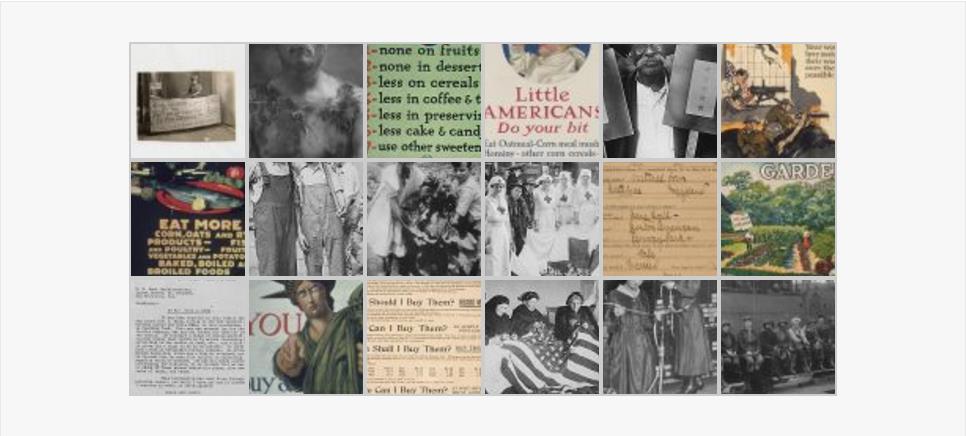Americans on the Homefront Helped Win World War I
Seeing the Big Picture

About this Activity
- Created by:National Archives Education Team
- Historical Era:The Emergence of Modern America (1890-1930)
- Thinking Skill:Historical Analysis & Interpretation
- Bloom's Taxonomy:Analyzing
- Grade Level:Middle School
In this activity, students will match photographs, posters, and documents to visualize ways that Americans contributed to the war effort on the home-front during World War I. Students will see a payoff image related to the armistice celebration and reflect on the sacrifices made during wartime.
https://docsteach.org/activities/student/americans-on-the-homefront-helped-win-world-war-iDocuments in this activity
- All About W.S.S. What are they?...Why Should I Buy Them?...How Can I Buy Them?... Where Can I Buy Them?... Every Stamp helps to Save a Life, Every Stamp Helps To End The War...
- American Protective League to U. S. Food Administration re: Carl A. Rink
- American Red Cross Parade, Birmingham, Alabama. Birmingham View Company
- "Yanks and Tommies" During the Armistice Celebration
- Doctor Stephen S. Wise, Rabbi of the Free Synagogue, has become a laborer in the shipbuilding yards of the Luder Marine Construction Company, at Stanford, Connecticut, together with his eighteen year
- Eat more corn, oats, and rye products...
- Girls operate stock boards at Waldorf-Astoria. The Waldorf-Astoria Hotel is employing girls to operate tickers and stock exchange boards. The Waldorf is the first to employ girls in its various depart
- Has eleven sons in service. Ike Sims of Atlanta, Georgia, 87 years old, has eleven sons in the service. . .
- John Meints, Punished During World War I
- Little Americans. Do Your Bit.
- Patriotic old women make flags. Born in Hungary, Galicia, Russia, Germany, Rumania. Their flag-making instructor, Rose Radin, is standing. Underwood and Underwood
- Photograph of Bicycle Boat Promoting Food Conservation in Calexico, California.
- Women Rivet Heaters at Puget Sound Navy Yard
- School Children Holding Cabbage Raised in a War Garden
- Sugar. 1- none on fruits, 2- none in desserts, 3- less on cereals, 4- less in coffee or tea, 5- less in preserving, 6- less cake and candy, 7- use other sweeteners. Save It."
- Team Work Wins! Your work here makes their work over there possible. With your help they are invincible. Without it they are helpless. Whatever you make, machine gun or harness, cartridges or helmet,
- Uncle Sam Says, Garden to Cut Food Costs
- Draft Registration Card for George Herman Ruth
- You Buy A Liberty Bond. Lest I perish. Get Behind The Government.




